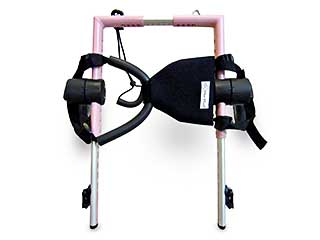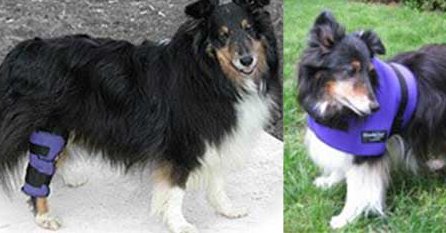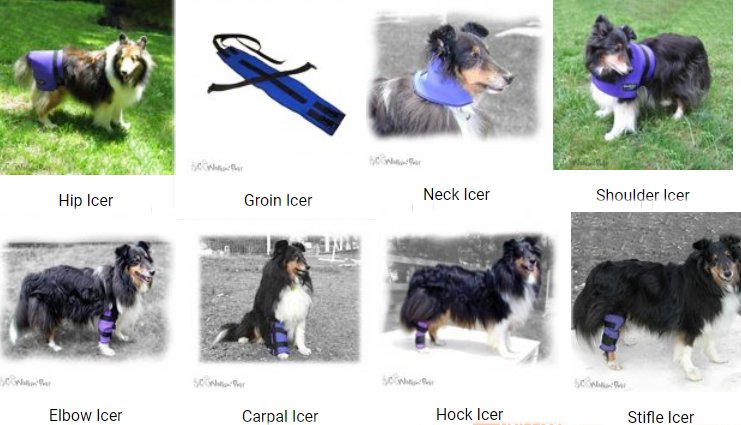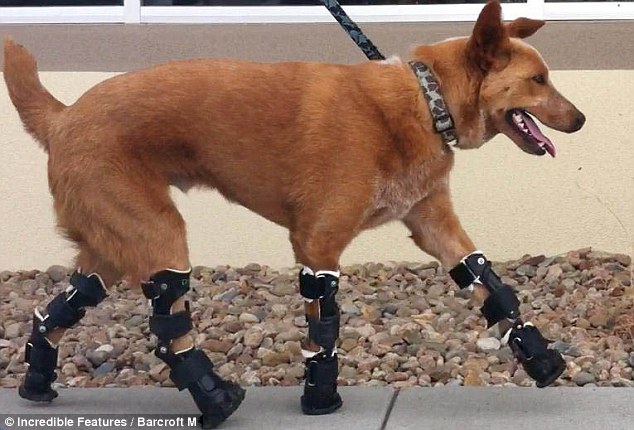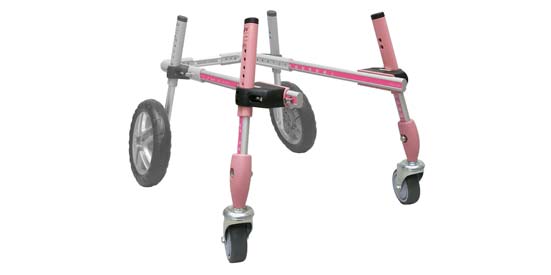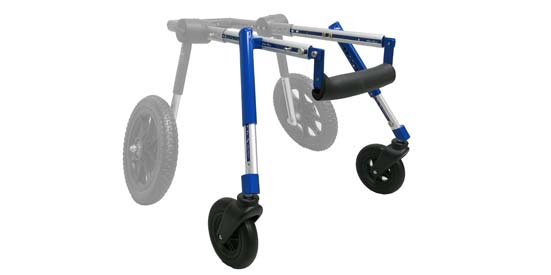Dogs with Missing and Amputated Limbs
Dogs are amazing creatures! Born without limbs, deformed limbs, or lost to amputation they heal and get on with life without self pity or even much frustration. They just live life. As you should do with a dog that loses a limb. Dogs born with deformities have an advantage mainly because they have known nothing else. How do dogs with missing limbs cope? Quite well!
Canine osteosarcoma, or bone cancer, is probably the most common reason why dogs lose their legs. Accidents are next. Losing a let, especially a real leg is frankly, not too big a deal. Losing a front leg is a bit more difficult, but not much - and that's mainly because the front legs support more weight than the back legs
The surgical site is going to look scarier than it is, removal of a limb is major surgery and there is a big scar - it IS major surgery, often requiring cutting bone and muscle. Most dogs however, are up and walking on three legs within 12-24 hours. Encourage your tripod to get up and moving. Don't baby! She will need practice to regain her balance. There are many good pain meds available to veterinary medicine so don't hesitate to ask your vet what is available that will not make the dog groggy or wobbly so he can get on his remaining feet asap.
Meet Duncan Lou who...
Three-Legged Dogs
Surprisingly, many three-legged dogs have no trouble with stairs, but supervise until you know your dog has re-learned how to negotiate them! Ideally your stairs will have a non-slip surface such as carpet or a rough surface - which makes it much easier to get balanced. If your dog has trouble with stairs, a body harness can be helpful. Harnesses can be as helpful to you - saving your back when you help your dog up and down. You can create your own harness by cutting down the sides of a canvas shopping bag so that each side has a handle.
Smooth floors are a challenge for some new amputees. Nonskid rugs, or tacky coat on paws can help.
Physical therapy , such as swimming and walking on uneven surfaces, can help a new tripod build up strength in his remaining limbs and improve his balance. Ask your vet whether it’s a good idea for your dog. You need to be careful so that you don't overstress the remaining limbs - particularly for dogs with hip dysplasia. Amputation can cause strain on the remaining leg if it is over-used or has hip dysplasia.
Having three legs is one area where size doesn't matter much. Large dogs adjust just as easily as small dogs. Make sure your dog doesn't have to carry around a lot of extra weight. There seems to be some controversy over whether prosthetics benefit amputee dogs. A stifle brace is used post operatively following a ligament repair or when your pet is not a surgical candidate. Varus/vlagus deformities, partial ligament tears and/or a luxating patella can be accommodated with use of a custom stifle brace. Tamarack joints can be used to offload the stifle by mimicking the actions of a healthy ligament. Fractures can be set with a solid stifle design or can be used for long-term use to aid with non-unions. Ultraflex joints can be used to increase range of motion where a contracture is present. A range of motion joint can also be used to set a desired range or to statically progressively aid in contracture management. A range of motion joint can also be used to set a desired range or to statically progressively aid in contracture management.
Faith the wonder dog.If the dog is merely a tripod, they will probably adjust just fine without anything. However, over time overuse of the remaining limbs could cause the development of osteoarthritis. A study comparing hind-leg and foreleg amputations found that the loss of a foreleg caused greater changes in the dog’s gait, suggesting more stress on the muscles and joints so a prosthesis might be helpful in lessening that damage.
Losing Use of a Limb in Pets
Some dogs don't lose their limbs, but they do lose USE of their limbs....this can occur when several diseases manifest. Polyneuropathy in dogs and cats is one such disease. A collection of peripheral nerve disorders that often are breed-related. . Polyneuropathy usually involves motor nerve dysfunction, also known as lower motor neuron disease. Symptoms include decreased or absent reflexes and muscle tone, weakness, or paralysis. It often occurs in the rear legs and is on both sides.. Most are chronic problems with a slow onset of symptoms, but some occur suddenly. Other diseases that can cause decreased use of limbs, pain or dysfunction are:
- Canine degenerative myelopathy (DM)
- Slipped discs in the back - intervertebral disc disease)
- Discospondylitis – bacterial or viral infection in the bones of the spine (vertebrae)
- Infection or inflammation in the spine
- Distemper
- Meningomyelitis – viral or bacterial infection of the brain, resulting in miscommunication of nerves impulses
- Polymyositis - infection or inflammation in the muscles
- Polyneuritis - inflammation in nerves
- Embolus - blocked blood flow to the spine
- Aortic embolus - blocked blood flow to the rear legs
- Tumors or cancer in the spine or brain
- Tick paralysis resulting from tick bites
These may or may not be as permanent as a loss of a limb, but can be just as difficult...sometimes more so because the dog will expect to be able to use those limbs and will flounder around because it's there.
A website and online community, Tripawds.com is devoted to amputee dogs, with blogs, help topics, and a downloadable guide to rehab and care. They have a YouTube channel, which will inspire you to not give into pity for your tripod dog.
Congenital Defects in Dogs
Often a limb that is non-functional will be removed because it just gets in the way and keeping it may cause other problems (such as infection, irritation, circulation issues). Most dogs in this situation learn to get around just fine. For those that scoot, a drag bag or wheeled cart can be very helpful - saving the dog from irritation and potentially infected sores. The dog below had this situation and he has thrived. So never, never underestimate a dog without limbs! Remember we only have two feet and they have four...so they actually have a couple of spares!
How about this guy! Robomutt. With all 4 paws amputated he can now walk again thanks to a company called Orthopets in Denver, Colorado and a wonderful new owner.!

